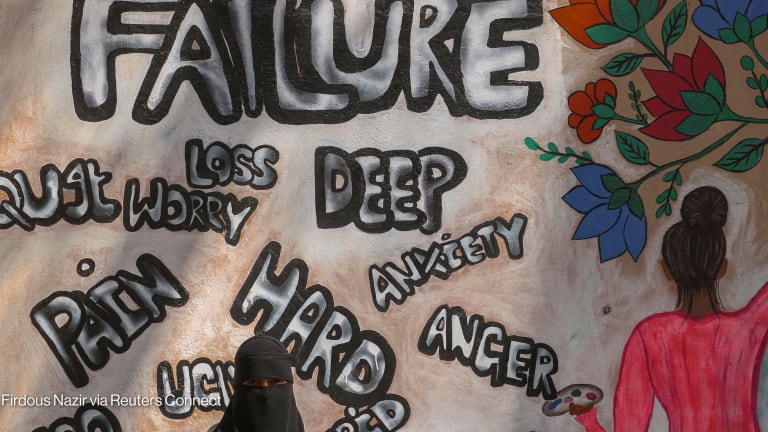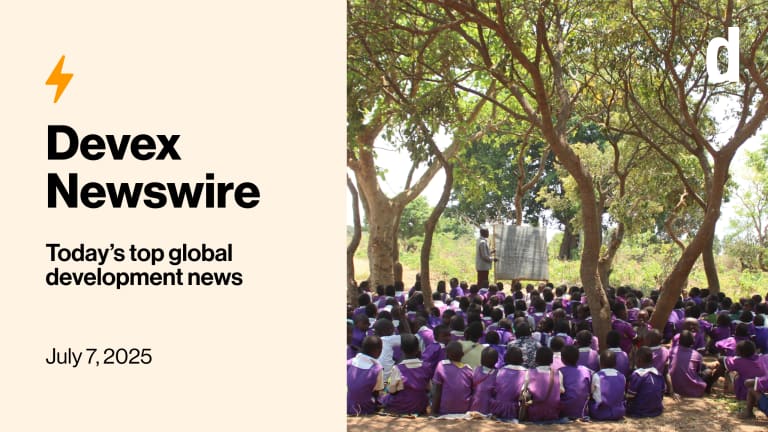
Most low-income countries have so far received subsidized coronavirus vaccines from COVAX, or donated doses from high- and upper-middle-income countries. But to vaccinate at least 70% of their populations, these countries will need to significantly increase their current health care spending, creating a financial crisis as they are likely to incur more debt to make that happen.
Sign up for Devex CheckUp
The must-read weekly newsletter for exclusive global health news and insider insights.
Just below 2% of the population in low-income countries has received at least one dose of a COVID-19 vaccine, according to Our World in Data as of Sept. 8. Global health leaders and experts continue to call on high-income countries to donate more doses.
COVAX, which aimed to deliver at least 1.8 billion doses to vaccinate 30% of the 92 countries part of COVAX’s advance market commitment, has so far delivered only over 240 million doses.
“As countries endure a sharp decrease in government revenue, they face an impossible challenge of balancing health and social spending to protect their populations.”
— Laurel Patterson, head, UNDP’s Sustainable Development Goal integrationBut even if COVAX delivers on its goal, countries will need to find other means to get supplies to increase their vaccination coverage. The challenge, however, is that for many of these countries, the cost of procuring additional vaccines will likely put further pressure on government budgets.
According to the Vaccine Affordability Index, which is part of the Global Dashboard on COVID-19 Vaccine Equity — launched last month by the UNDP, the World Health Organization, and the University of Oxford’s Blavatnik School of Government — low-income countries will have to increase their average health care spending by almost 57% to cover the cost of vaccinating 70% of their population, based on the assumption that a two-dose vaccination costs $35.
That cost includes distribution costs assumed at $3.70 per person vaccinated with two doses.
This can be challenging as most governments are already dealing with high expenditures and reduced revenues because of the pandemic.
COVAX reduces end-of-year forecast figures
The international program says the reduction is due to export restrictions, challenges at manufacturing facilities in scaling up production, and delays around the regulatory approvals of two COVID-19 vaccine candidates.
“As countries endure a sharp decrease in government revenue, they face an impossible challenge of balancing health and social spending to protect their populations from the pandemic and the economic and social impacts of domestic and international lockdown measures,” Laurel Patterson, head of Sustainable Development Goal integration at UNDP, wrote to Devex in an email.
This would likely cause most of them to borrow money to finance the vaccine purchases, leading to “another aspect of inequity as in low-income countries the vaccine procurement costs would constitute a much larger share of projected increase in public debt than in other income groups,” she added.
Compared to low-income countries, the average increase in high-income countries’ health care spending is only 0.8% to cover vaccinations for 70% of their populations, according to the index.
The financial burden would be higher if countries, regardless of income, would have to pay the same price for each vaccine dose.
That means, for example, that the Democratic Republic of Congo, which has an average per capita health care expenditure of $18.51 — the lowest among the countries included in the index — will need to increase its health care spending by 132% to vaccinate 70% of its population if it has to pay $35 for a two-dose vaccination per person.
“Given inequity in vaccine affordability, additional financing in the form of grants and concessional financing recently proposed by the IMF is crucial to end the health crisis, secure global recovery, and prevent low and lower-middle-income countries from going down the debt spiral,” Patterson said.





